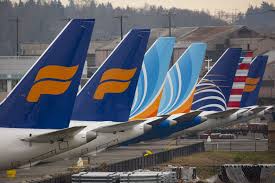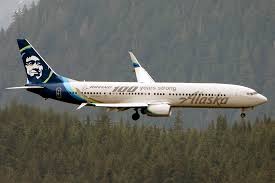Boeing and the 737 Max Scandal (Part II of III)

Boeing’s 737 Max problems began over ten years ago. Facing competitive pressure from Airbus, Boeing embraced the 737 Max as its competitive savior. After two horrific crashes killing a total of 346 people, the FAA ordered the grounding of the 737 Max. Despite the grounding, Boeing produced another 400 737 Max airplanes before ceasing all manufacturing of the airplane in January 2020.
The two plane crashes occurred on October 29, 2018, Lion Air Flight 610, in Indonesia, and March 10, 2019, Ethiopian Airlines Flight 302, in Ethiopia. Eventually, investigators concluded that the 737 Max’s maneuvering characteristics augmentation system (“MCAS”) malfunctioned on both flights causing each plane to fall into a deadly crash. Boeing’s crew manuals and training omitted relevant information about the MCAS and how to disable or override the system.
A Congressional investigation was launched, along with regulatory and criminal investigations. In addition to the MCAS defect, regulatory agencies from around the world noted several systems and manufacturing defects. The National Transportation Safety Board noted that there were multiple cockpit alerts that likely confused the pilots. Congress criticized Boeing’s culture of concealment during the safety certification process and in the accident investigations.

Before terminating CEO Muilenburg in December 2019, Boeing suffered serious public relations harm when the FAA discovered that Boeing failed to produce to the FAA damaging messages, including some from 2016 in which a Boeing pilot complained that MCAS, which was new to the 737 Max, was malfunctioning in the flight simulator.
Federal regulators and Congress have criticized Boeing for overlooking safety risks and failing to ensure proper training of pilots on use of the MCAS. As of April 2020, Boeing’s losses are estimated to exceed $20 billion (with a “B”).
In March 2020, the House Transportation Committee issued Preliminary Findings from its investigation of the FAA and Boeing’s 737 Max. (Preliminary House Report). The Transportation Committee found that the MCAS was a key contributing factor to both crashes – Indonesia and Ethiopia. The House Report noted five basic themes contributing to the MCAS and safety defects:
- Production Pressure: There was significant financial pressure on Boeing and the 737 Max program to compete with Airbus’ A320 aircraft;
- Faulty Assumptions: Boeing made faulty assumptions about critical technologies on the 737 Max and the MCAS. As a result, Boeing failed to classify MCAS as a safety-critical system;
- Culture of Concealment: Boeing withheld crucial information from the FAA, its customer airlines and 737 Max pilots. This included hiding the existence of MCAS;

- Conflicted Representation: The FAA’s current oversight structure of Boeing created conflicts of interest. The House Report noted several instances were Boeing representatives were authorized to act as FAA representatives and validate aircraft systems on the FAA’s behalf. These conflicts resulted in the FAA’s failure to ensure proper safety certification of Boring systems; and
- Boeing’s Influence Over FAA’s Oversight: FAA officials documented examples where FAA management overruled determinations by FAA technical experts who identified flaws in Boeing safety systems.















